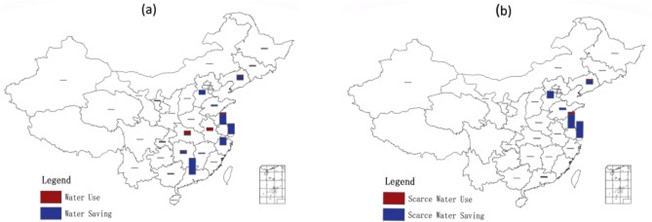
ABSTRACT
Interprovincial electricity transmissions have been utilised in China to overcome the country's imbalanced social-economic development and resource endowments. A bottom-up technology-based model is adopted to estimate water uses in electricity-exporting provinces to produce the transmitted electricity as well as opportunistic water savings in the receiving provinces. The results highlight that, in 2014, on a national scale, electricity transmissions generated co-benefit of saving 20.1 billion m³ of water nationally due to the electric power sector's water productivity differences in the exporting and importing provinces. Taking regional water stresses into account, 10.98 billion m³ of national scarce water saving is realized through electricity transmissions. Moreover, electricity transmissions by China's proposed 12 future transmission lines are expected to use additional 3.22 billion m³ of water in the electricity-exporting provinces. As more water-intensive technologies, e.g. open-loop cooling, are more commonly utilised in the electricity-receiving provinces, a total amount of 16.97 billion m³ of water use will be avoided nationally. Water-use efficiency for power production should be improved in all regions. Transmitted power imports should still be encouraged in water-scarce regions to alleviate their water stresses while power exports should be shifted away from water-stressed regions to water-abundant ones. Energy transformation by utilising gas-fired capacity and hydropower in water-abundant Southern China could be advanced.
KEYWORDS
Water conservation; Electricity transmission; Water-energy nexus; Co-benefit
JCR CLASSIFICATION
Q1
Journal of Cleaner Production
https://doi.org/10.1016/j.jclepro.2019.05.001
